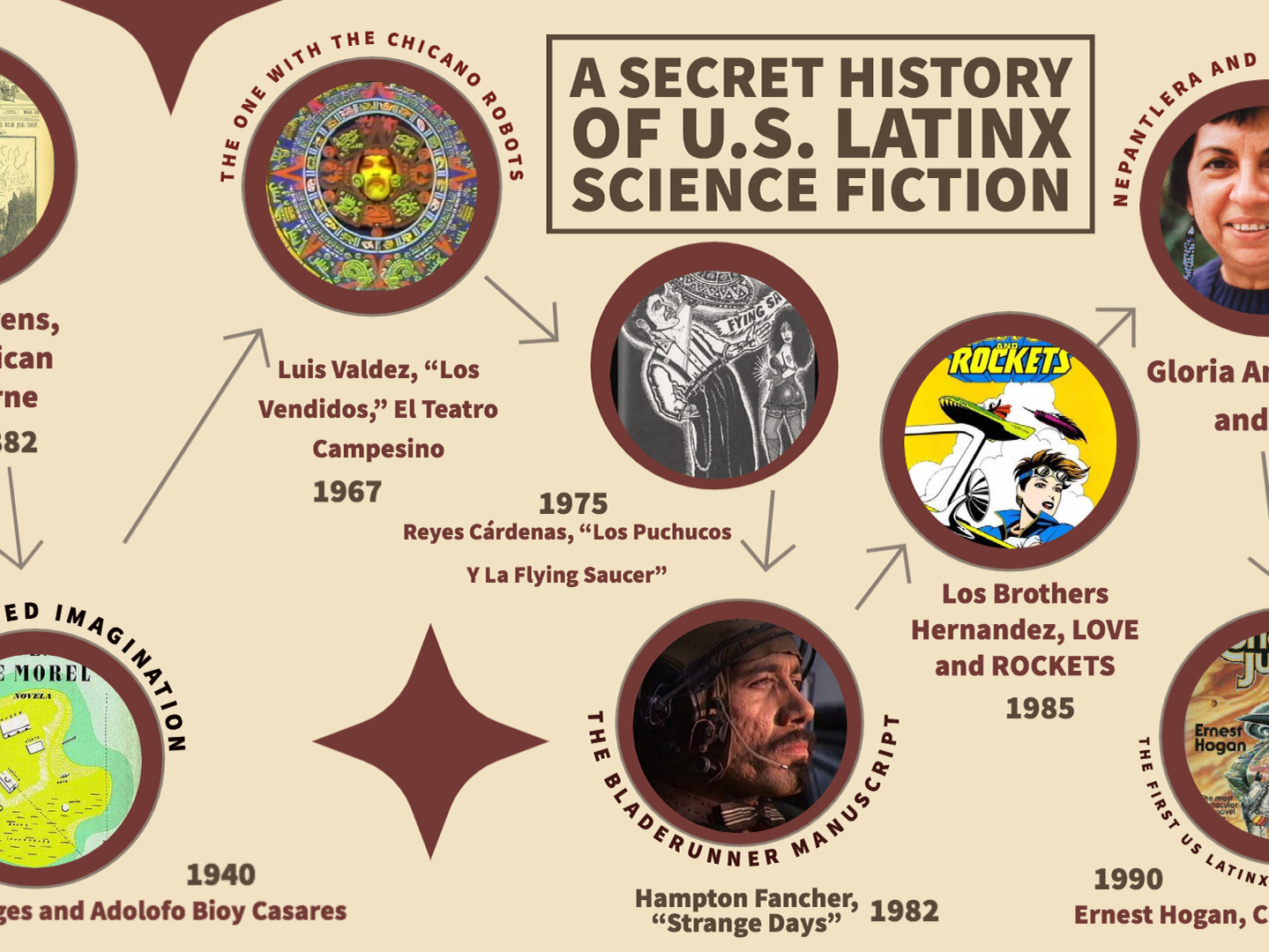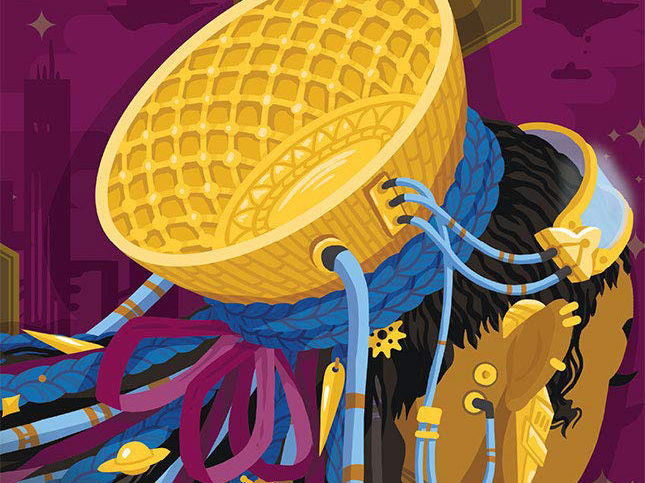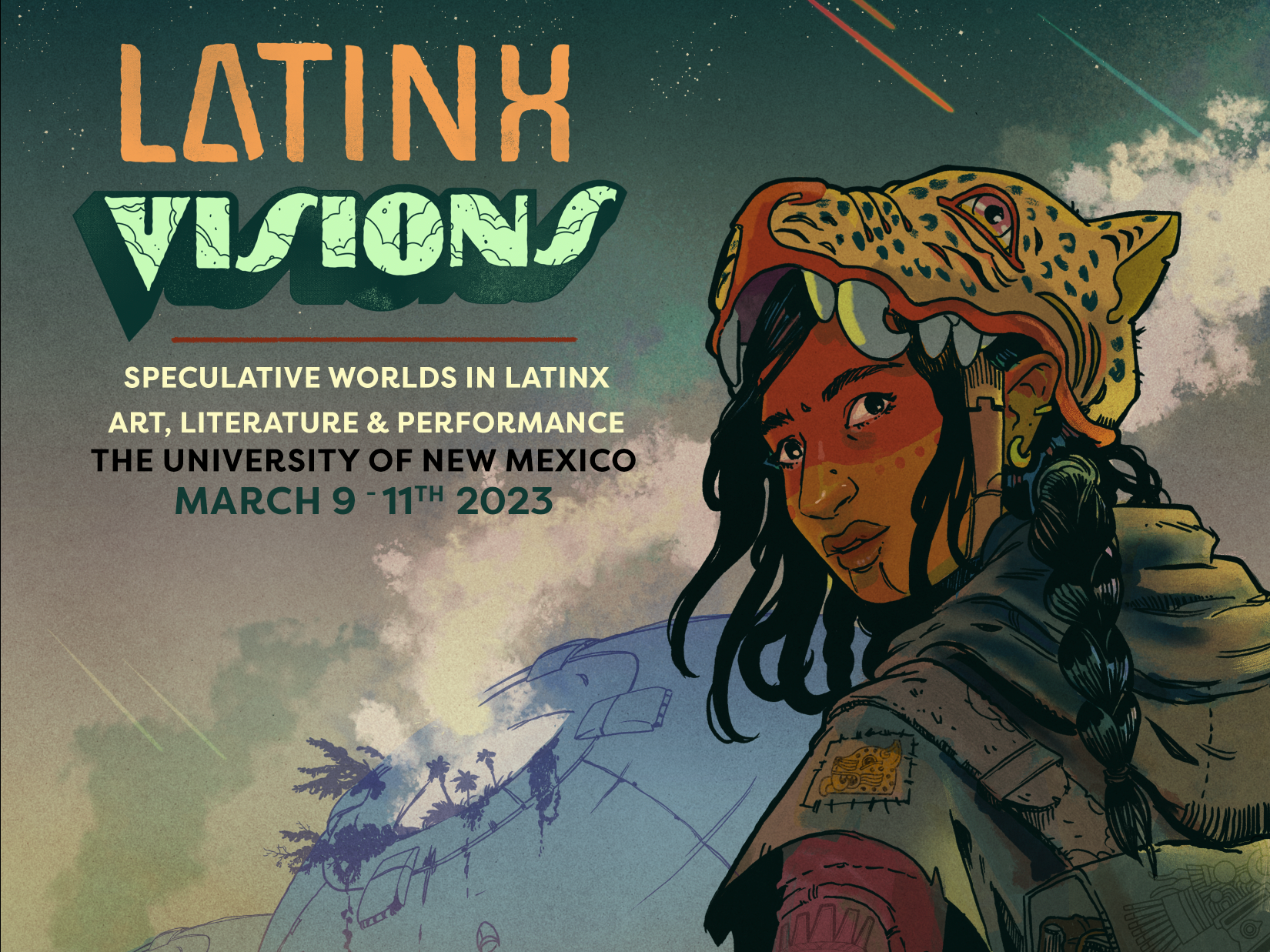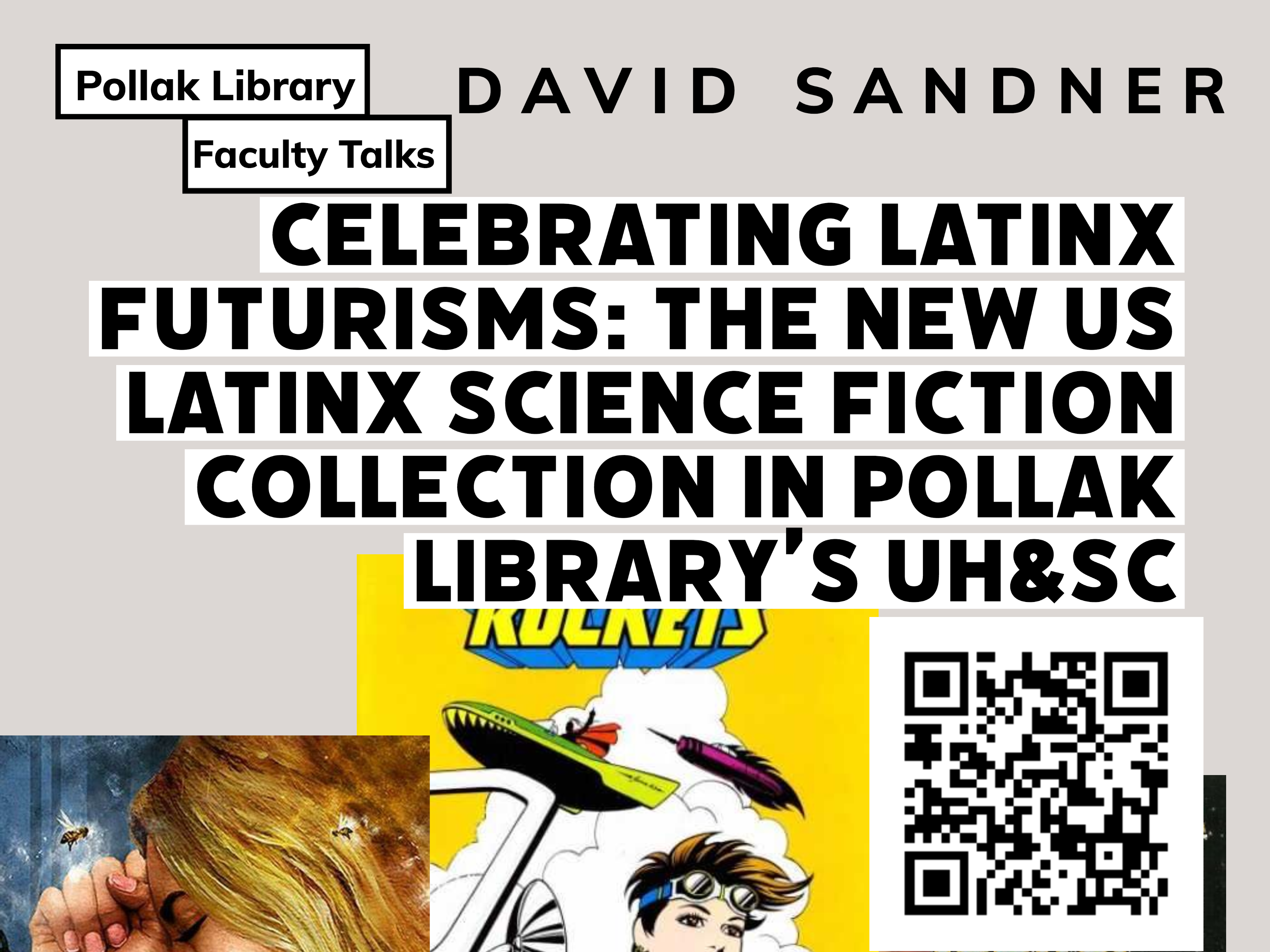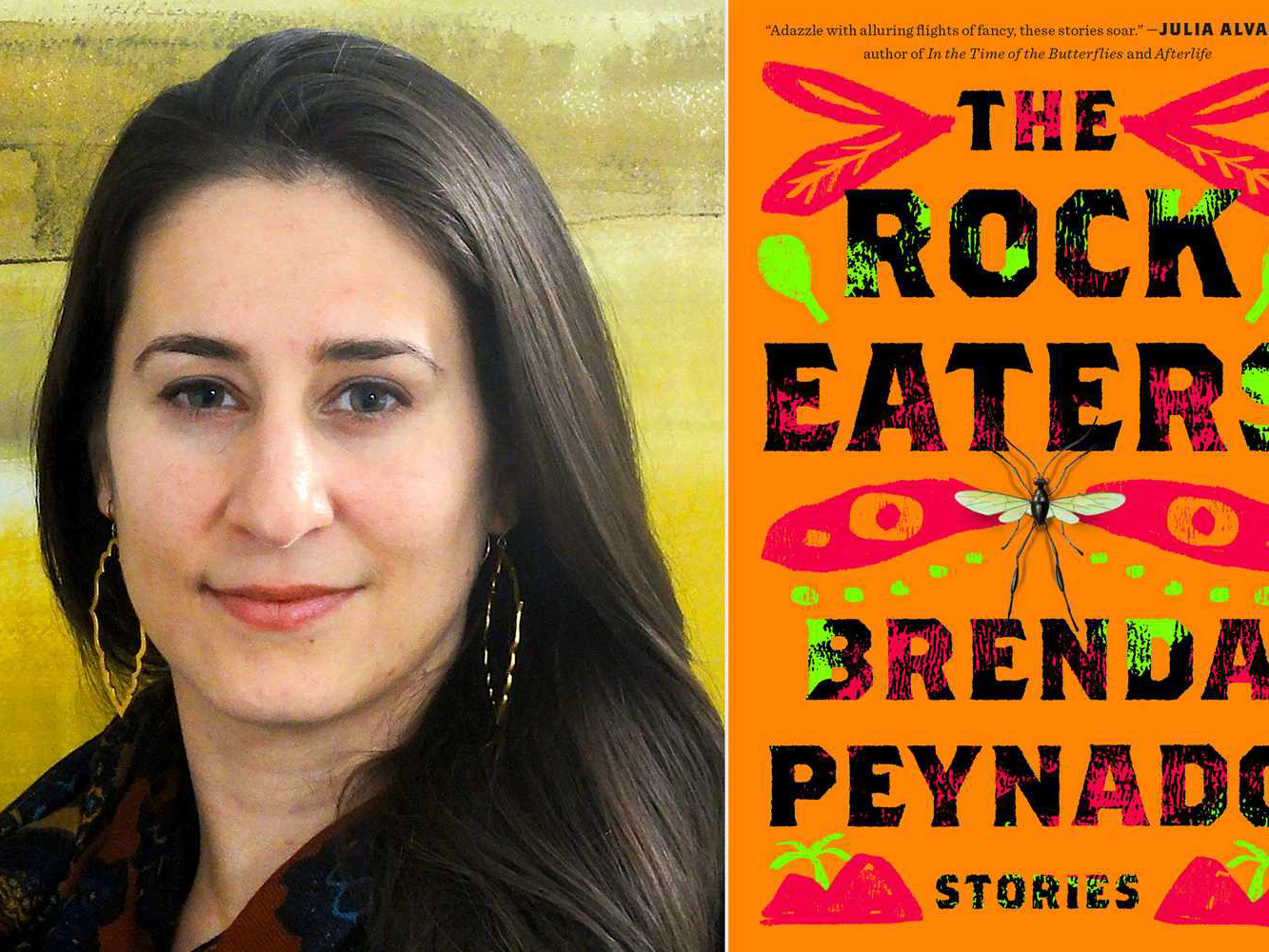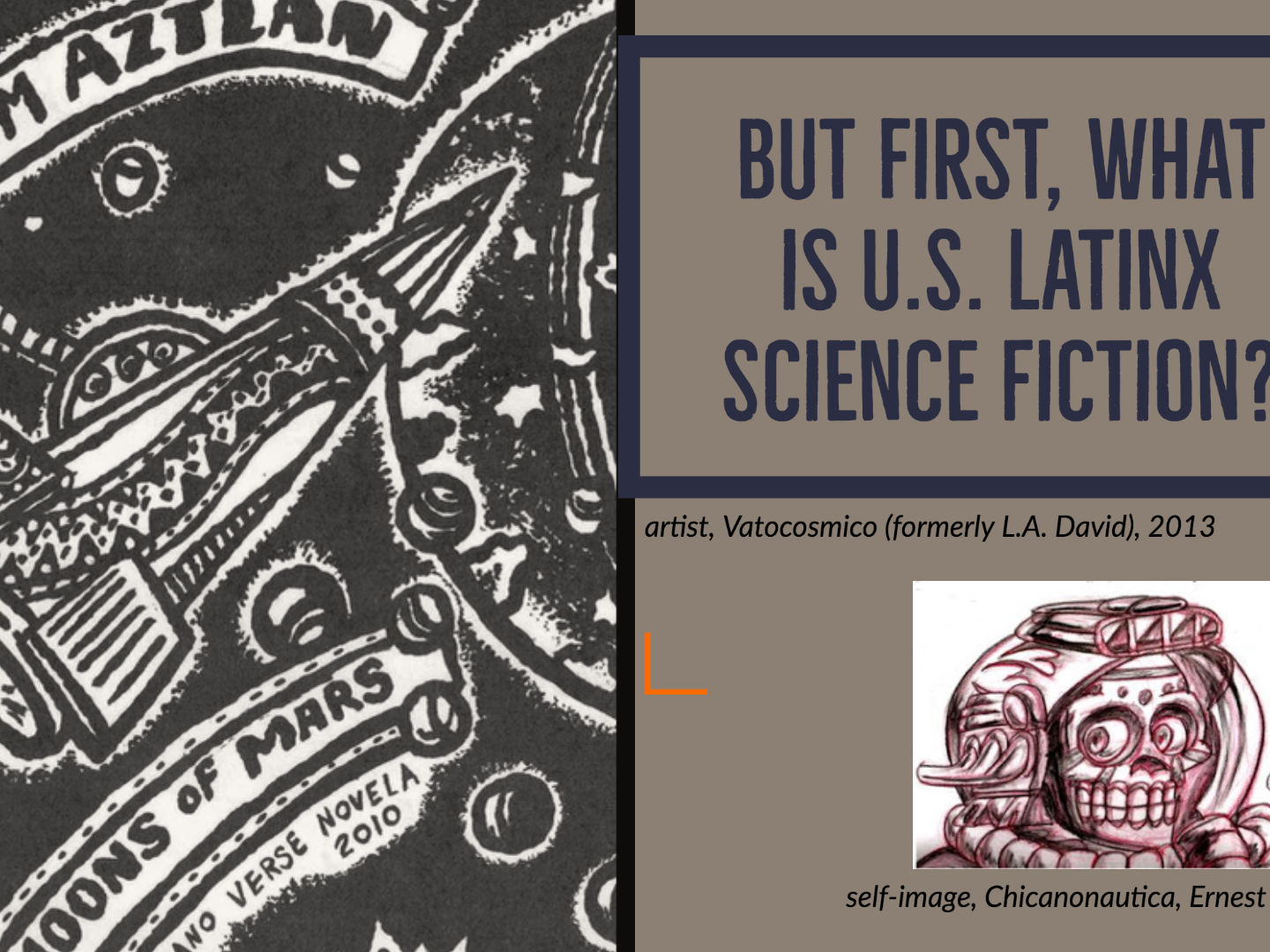2003--COSMOS LATINOS: The overlooked (in the US) International Latinx SF Traditions
Though US Latinx SF may be an emergent genre, bringing newness to culture, it is influenced not only by the US genre but by International Latinx SF, a tradition long overlooked by English-language readers. As Goodwin and Stavans write: "Science fiction from Latin America, as opposed to science fiction written by US Latinos, has a long and deep tradition going back at least to the 18th century." This long, deep tradition makes a powerful impact on shaping US Latinx SF, but in diverse ways as this is actually not one but many traditions: "the influence on Latin American science fiction from the United States and Europe is strong, but there are internal influences as well both in terms of notions about technology and in terms of distinct national literary traditions."
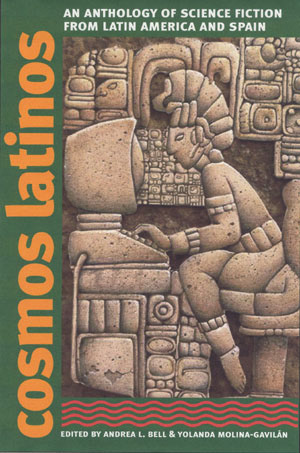
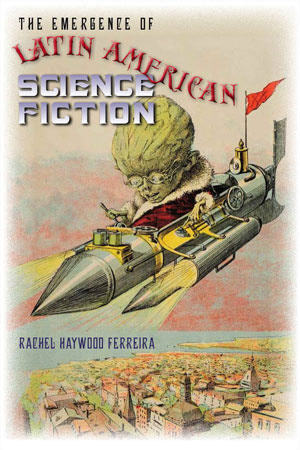
The many traditions of Latinx SF deserve an accounting. A 2003 anthology, Cosmos Latinos: An Anthology of Science Fiction from Latin America and Spain, edited and translated by Andrea L. Bell and Yolanda Molina-Gavilán, serves as a crucial corrective. Goodwin and Stavans call it a "landmark anthology of Latin American and Spanish science fiction which also contains an introductory overview of the history of the field."
Rachel Haywood Ferreira's The Emergence of Latin American Science Fiction, published in 2011, offers a scholarly companion for framing the history of International Latinx SF for English-speaking audiences. Her idea of "retrolabelling" to create a genealogy or "secret history" of Latinx SF has been important to this project.
2004--CHICANAFUTURISM
As we go deeper into the new millennium, we are no longer narrating a "secret history." We enter the era of names, anthologies, special issues, and scholarly overviews. US Latinx SF is discovered as "altermundos," "Latinxfuturism," "the speculative turn"...but the first name for it is "Chicanafuturism."
The term is invented in 2004 by scholar Catherine S. Ramírez, but not because of something she read. As Matthew and Stavans explain: "Influenced by Afrofuturist scholarship, Ramírez coined the term “Chicanafuturism” … in order to frame her study of Marion C. Martinez’s religious sculptures, which are constructed of old computer parts." (See Martinez's "Circuit Board Art" below, as pictured on her website here.)
But people had been waiting, and her term is picked up by numerous other scholars in and out of literary study to describe a new, emergent Latinx futurist genre.
Why use "Chicanafuturism," gendered feminine, to describe the futurist work of male and female artists? Because the future isn't here; it's an "other." Futurism speaks from the margins, from the borderlands and the people, all too often gendered feminine, who have always lived there.



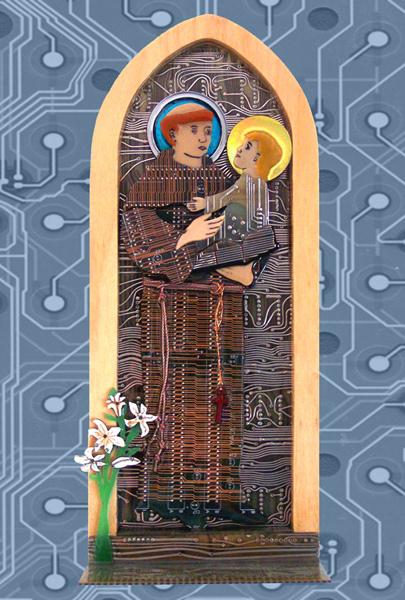
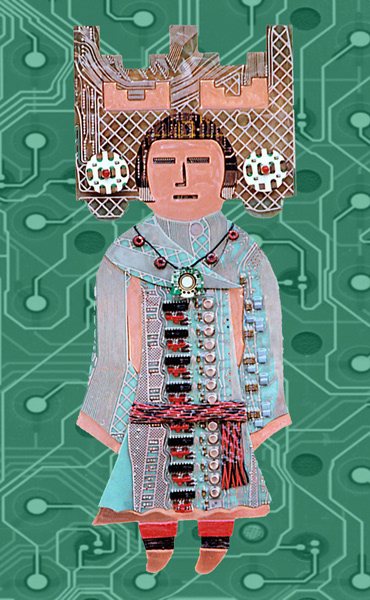
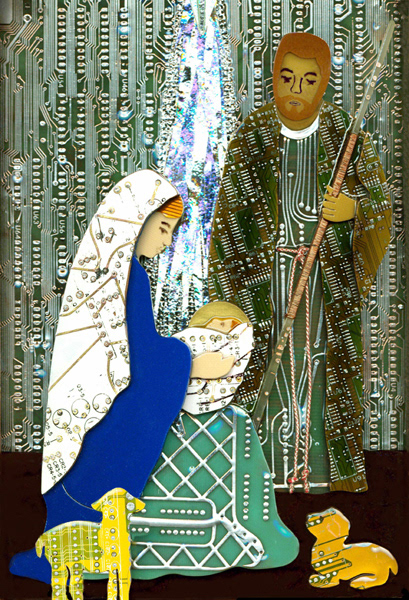
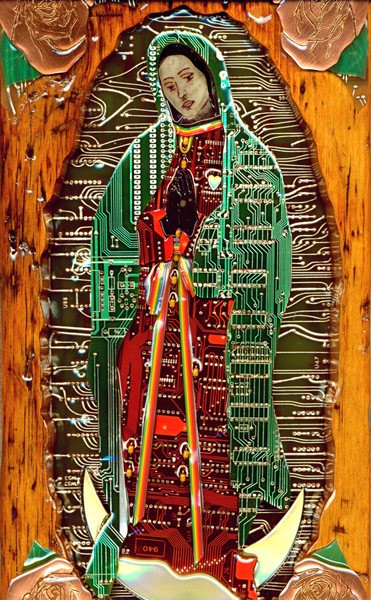
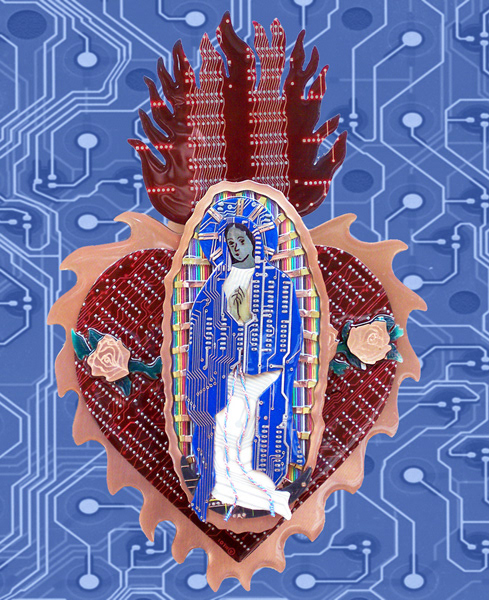
THE SPECULATIVE TURN in LATINO STUDIES
US Latinx SF made significant breakthroughs in the early 2000s. Cathryn Merla-Watson even identifies what she calls "a veritable renaissance of Latin@ speculative texts, encompassing, most famously, Dominican American writer and public intellectual Junot Diaz's Pulitzer Prize winning 2007 novel The Brief and Wondrous Life of Oscar Wao. This brilliant speculative novel marshals and combines elements of sci-fi, fantasy, horror, and myriad popular cultural references to portray the brutality of the US-sponsored dictatorship of Rafael Trujillo from 1930 to 1961 and its haunting legacies. It further emblematizes the heterogeneity and trans-Americanity animating Latin@futurist texts, and demonstrates how Latin@futurism may function as incisive social critique. Díaz’s novel is a literary coup d’état for its sheer narrative ingenuity in addition to adumbrating that Latin@s are in fact writing speculative fiction and radically transforming the genre. Importantly, too, it contributed to launching the 'speculative turn' within Latin@ studies."
The "speculative turn" involves a new valuing of work that looks to the future and technology in US Latinx literature and art. When Diaz published his sf short story "Monstro" in 2012 in The New Yorker, a premiere US literary magazine, it marked a new genre stepping centerstage in American letters.
In the video at right, "Geeking Out with Junot Diaz," he goes into a comic shop and talks about how "geek culture," including science fiction, make up the shared language of our culture. Look for his discussion of Los Bros Hernandez whose Love and Rockets is highlighted as a key part of our "Secret History" of US Latinx Science Fiction.
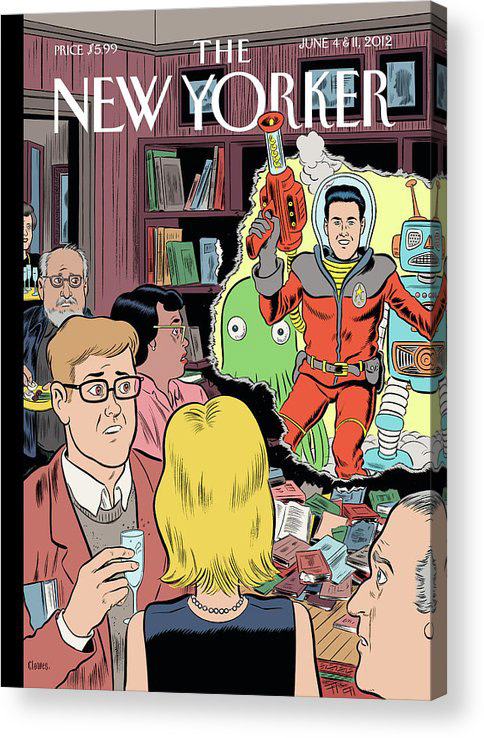


A Breakthrough Film
The primary interest of our new Special Collection is literature, but the influence of Alex Rivera's breakthrough independent movie "Sleep Dealer" is pervasive. As Goodwin and Stavans write, "Alex Rivera’s 2009 Sleep Dealer is certainly responsible for much of the attention to Latino science fiction and a number of articles have dealt with the film from a variety of theoretical perspectives."
Christopher González describes the film in a way that gets at what has made it so important: “Rivera’s Sleep Dealer, despite the seeming constraint of the independent filmmaker’s budget, takes virtual technology and body-to-computer interfaces—now traditional tropes of sci-fi— and recasts it to highlight ethical concerns of the undocumented and immigrant labor force in the United States. The erasure of a willful body and the preeminence of a machine-like mentality—a mechanized consciousness that places the labor value of one’s self above all else—is not simply a sci-fi device. Rather, Rivera’s narrative blueprint embosses this often-unacknowledged worldview necessarily adopted by undocumented workers in the United States. In this instance, it is Sleep Dealer, a creative work of sci-fi, which invites audiences to inhabit its storyworld and pay heed to the silent exploitation of actual brown bodies.”
Rivera says: "Sleep Dealer is my first film. It’s not anything like a Star Wars or a Blade Runner. In many ways it’s a humble film. But it’s also an honest attempt to use science-fiction to say something new, and something true, about our world today."
"Curiously Absent" No More: Altermundos and Latinx Rising
Merla-Watson, writing in 2016, describes the recent rise of US Latinx SF and the energy being released: "this is an exciting moment in Latin@futurism, evinced in the proliferation of speculative cultural production and scholarship beginning to uncover alternative Latin@futurist genealogies and conceive new theoretical tools, critical vocabularies, and hermeneutics."
Anthologies have an important history in science fiction in marking the arrival of new points of view, from Harlan Ellison's Dangerous Visions and Judith Merril's England Swings SF anthologies heralding the New Wave literary experiments of the 1960s, to Bruce Sterling's 1980s Mirrorshades anthology defining cyberpunk, to (most germane here) Sheree Thomas' Dark Matter: A Century of Speculative Fiction from the African Diaspora in 2000, a historical collection which revealed that the roots of Afrofuturism ran unexpectedly deep.
Matthew David Goodwin's Latinx Rising: An Anthology of Latinx Science Fiction and Fantasy, published in 2017, is that kind of innovative anthology for US Latinx SF, announcing the arrival of a new speculative genre, a new viewpoint on what sf is and should be, in our present moment. It is simply put the first ever anthology dedicated to US Latinx Science Fiction.
The same year, 2017, saw the publication of Altermundos: Latin@ Speculative Fiction, Film, and Popular Culture, edited by Cathryn Josefina Merla-Watson and B.V. Olguín. Drawing on a special topic issue of Aztlán: A Journal of Chicano Studies (Fall, 2015), this groundbreaking work is the first critical collection of essays on Latinx futurisms, which reaches out to encompass not only essays but manifestos, interviews, short stories and more from a wide array of artists and writers.
Here is how Merla-Watson describes the importance of the dual publication of these revolutionary works:
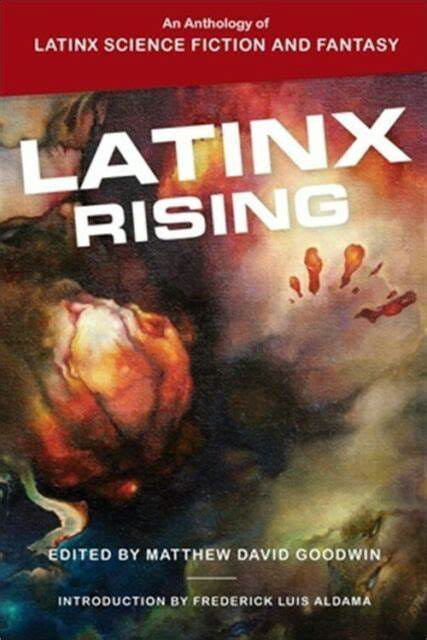
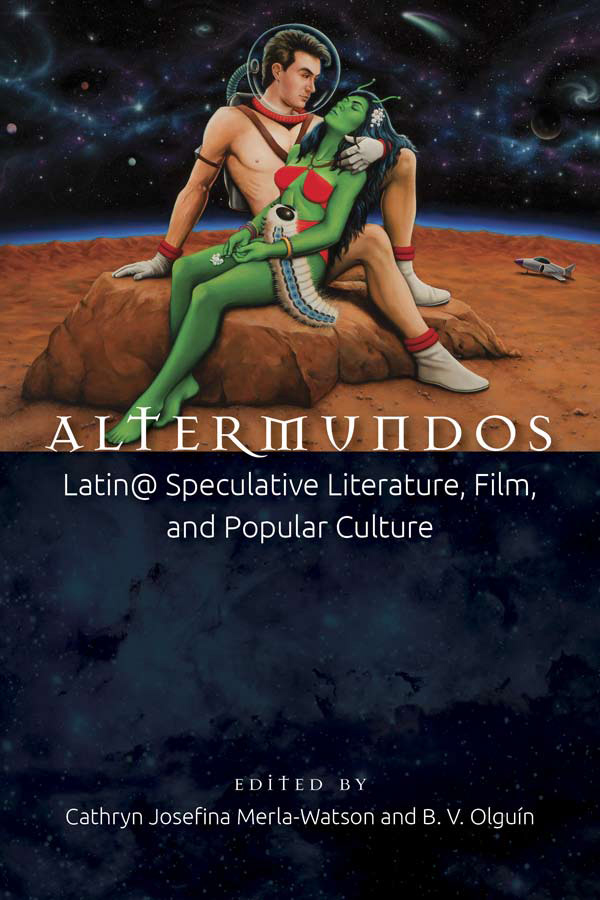
"
"Even though Latin@futurism dates back to at least the late 1960s, it is just recently that scholars have begun to study it in a focused manner. Anthologies such as Cosmos Latinos: An Anthology of Science Fiction from Latin America and Spain (2003) document an established tradition of Latin American sci-fi, and there exists a robust body of scholarship dedicated to interpreting this literature. Yet, curiously absent have been anthologies shoring up U.S. Latin@ sci-fi and attendant scholarship. However, two forthcoming publications are on the cusp of changing this status quo. The anthology Latino/a Rising edited by Matthew Goodwin, due out January 2017, coalesces for the first time U.S. Latin@ speculative fiction, showcasing its dazzling breadth and creative force. Second, our collected works Altermundos, due out March 2017, will also be the first of its kind to coalesce new scholarship dedicated to Latin@ speculative aesthetics that features new, representative speculative fiction in tandem with Latino/a Rising. These publications codify and valorize a heretofore largely unrecognized and undertheorized corpus within academia and popular culture. It is our hope, too, that our collective work issues a clarion call to scholars and the larger public to continue unearthing, theorizing, and enjoying Latin@futurism in all its profound illuminations, ranging from the horrific to the sublime."
Interconnected with these works is an art show, Mundos Alternos: Art and Science Fiction in the Americas, the first collective art show dedicated to Latinx futurisms. The show opened at UCR Arts, 2017-2018 and at various museums and art institutions around New York in 2019. As Afrofuturism is a cultural practice that must be seen as larger than literature, encompassing in particular the musical futurist tradition running from the Jazz of Sun Ra, through the intergalactic funk of Parliament-Funkadelic, to the sf stories running through the work of Janelle Monae today, so Latinx futurisms are embedded in a larger cultural context of futurisms. In this case, Mundos Alternos suggests that to understand the Latinx sf that we read, we also have to open our eyes to the constructions, sculptures, paintings, costumes, dance, weavings, and more represented in Latinx art. We should remember that "Chicanafuturism," the first naming of the movement, came from Catherine S. Ramírez criticism of Marion C. Martinez's "circuit board art," not the reading of a book. The literary genre is embedded inside and writes out of ongoing artistic engagements active across the arts.
You can check our more about Mundos Alternos in the article from the online media publication BOOM California, by pressing the button below. Also below, a few pictures of a small portion of the art, gives some idea of the scope of the exhibit.
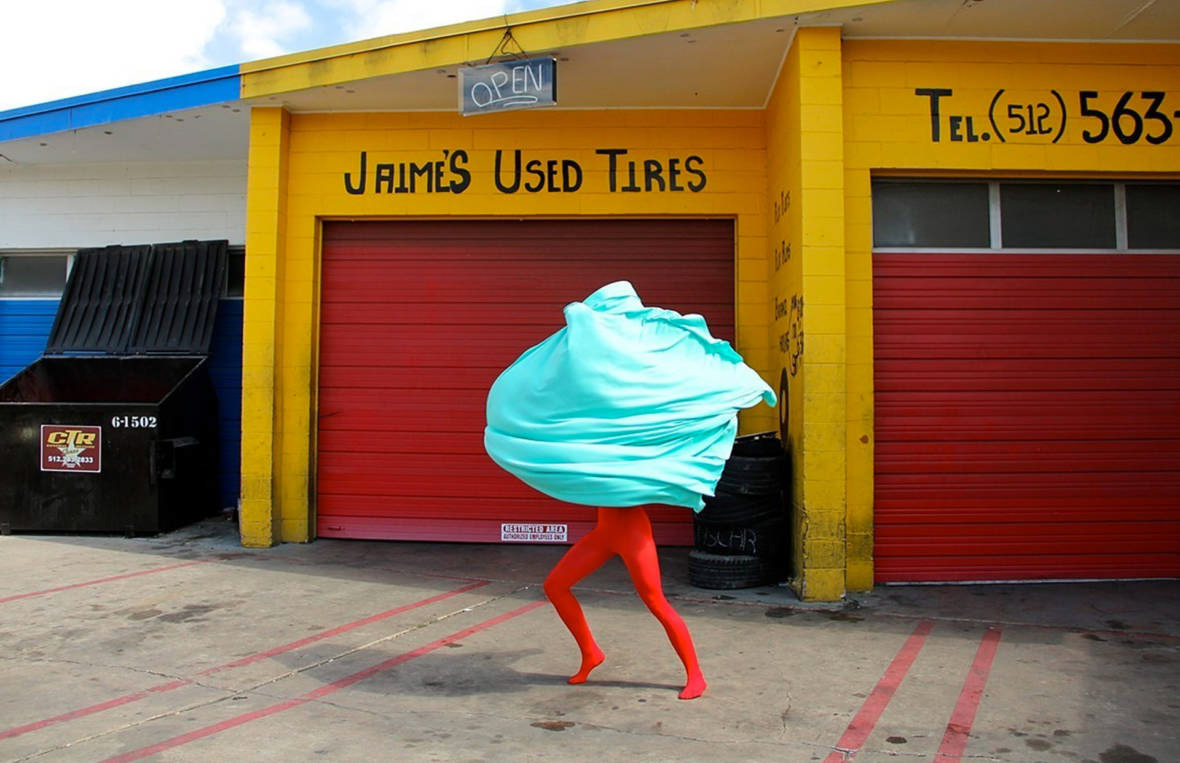
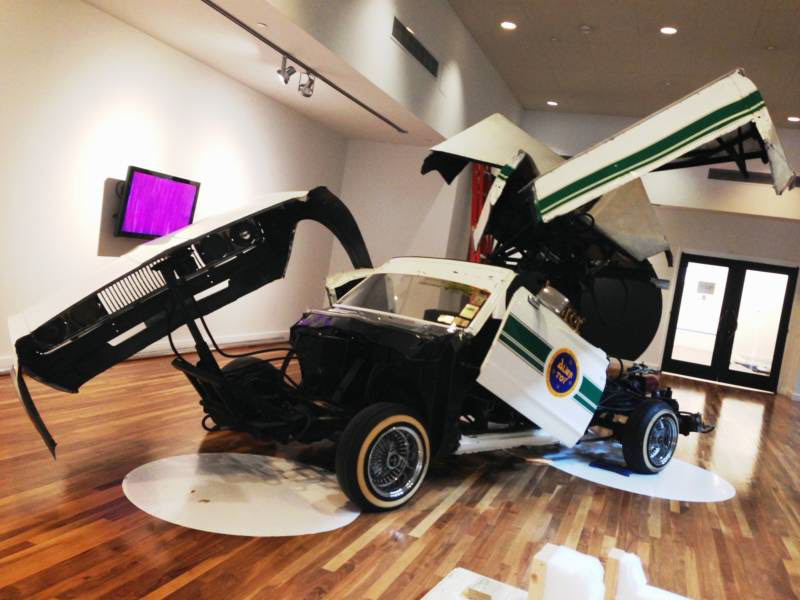


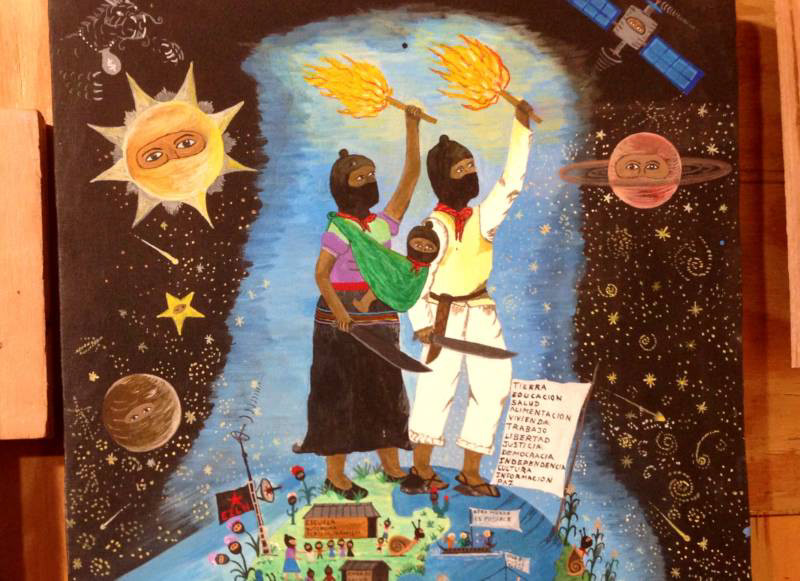

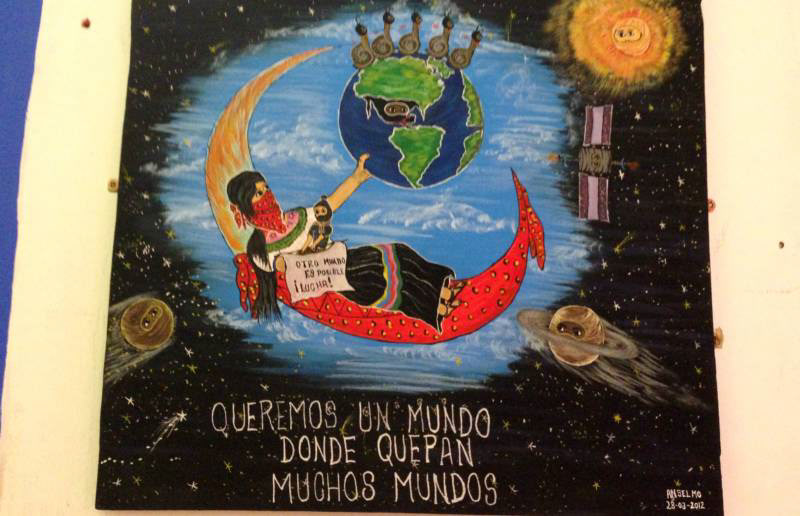
2018--"Who cares if I'm the first? What Matters is, I'm not the Last": The MexicanX Intiative
Here we are, arrived at the moment just before the future, known as now. Where is US Latinx Science Fiction going? What will the continued study of it focus on? Here there can only be speculation, imagination. The closer we are to the present, the less we can say about what will matter to the future, which keeps arriving moment by moment. But we would like to point to three things in closing that indicate the continued growth and reach of US Latinx SF.
First, while me might note scores of new books and authors, and many nominations and awards, we will glance for a moment at an extraordinary moment from WorldCon 76, the ongoing science fiction convention that is the field's oldest, having been the first ever, with roots in the 1930s. This event, surely, lies at the heart of the genre. In 2018, acclaimed sf illustrator John Picacio was named the Guest of Honor. Upon realizing he was the first Mexicanx creator ever honored as a Worldcon GoH, he founded The Mexicanx Initiative, gathering partners and getting donations to bring 42 Mexicanx creators into the wider awareness of the science fiction field. Here's what he had to say in an interview:
"I’m the first Mexicanx to be a Worldcon Guest of Honor in the 76-year history of the event, and most likely the first Latinx of any kind to be so named. So, while that’s a breakthrough and an honor, my first thought was, 'Hooray!' but my immediate second thought was 'Who cares if I’m the first? What matters is I’m not the last.'"
The Initiative itself became a finalist for a Hugo (a top award, given at WorldCons) as "best related work," along with his collaborators, the writers Julia Rios, Libia Brenda Castro, and Pablo Defendi. Castro would become the first Mexican woman nominated for a fiction Hugo in the award's history. Picacio was given the Solstice Award by the Science-Fiction and Fantasy Writers Association for service to the community. SFWA President Mary Robinette Kowal noted, “The work that John Picacio has done with the Mexicanx Initiative started as an effort for one conference and has had ripple effects through the field of science-fiction and fantasy. His on-going outreach is encouraging new voices to enter the community making SFF more vibrant than ever." Such an Initiative only seems possible now with so many new writers entering the field, an influx that makes Picacio being "the last" an increasingly remote possibility.
2023--“¡Latin@futurism ahora!”
Second, Latinx Visions, organized by Cathryn Merla-Watson, Matthew David Goodwin, and Santiago Vaquera-Vásquez, represents a groundbreaking moment, a full-scale conference focused on Latinxfuturisms. The Conference is forthcoming, to be held at the University of New Mexico in Albuquerque on March 9-11, 2023. Notable here is that Latinxfuturisms has reached a threshold in the breadth and depth of work being done that makes such a conference a necessity.
Finally, we are proud to be creating the first ever anywhere US Latinx Science Fiction Collection here in the University Archives and Special Collections of the Pollak Library on the campus of California State University, Fullerton. We are thankful for the central support of the Patrons of the Library, as well as the Emerti and the English, Anthropology and Latino/a Studies Departments.
The Collection will officially open in Spring, 2023. More on recent exhibits, the conference, and our collection below!
We intend the US Latinx SF Collection to serve as a place to reflect on what has been and to provide impetus to build toward what's next. Science Fiction is a place to make the future and so all its futures past are a good place to study just what the future promises. We want our archive to help us all remember that the future is always a contested space. Our motto here is, "If they're not going to give us the future, we're going to have to make it ourselves."
The last word of this timeline goes to Merla-Watson and Olguín in Altermundos:
"Through disidentificatory speculative tactics Latin@futurism defamiliarizes dystopic realities, demands real change, and gestures toward other possible futures and ways of being. Latin@futurism insists upon our right to exist, to not only survive but also to flourish:
“¡Latin@futurism ahora!”
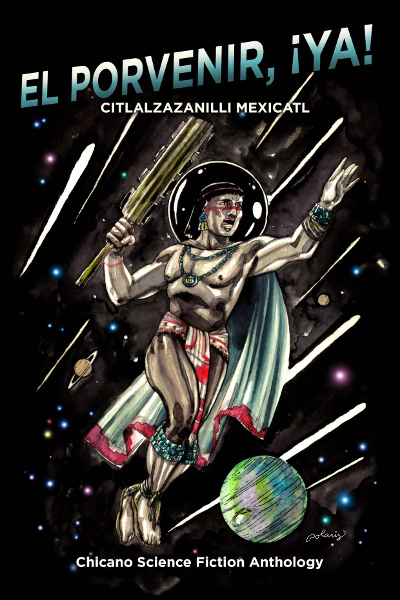
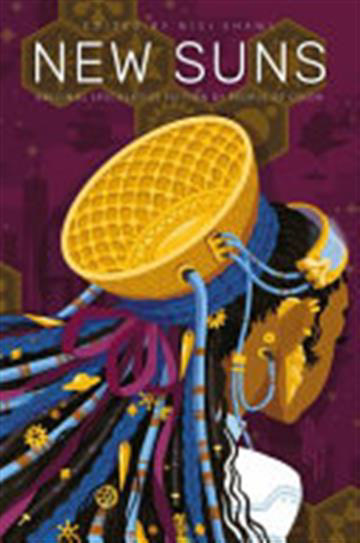
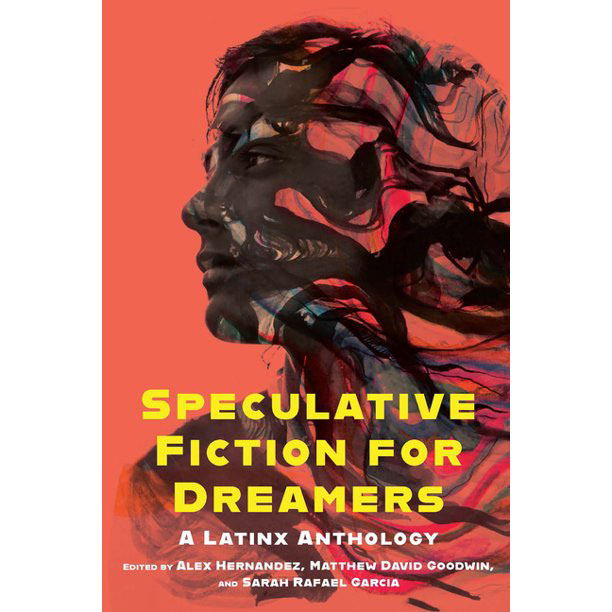
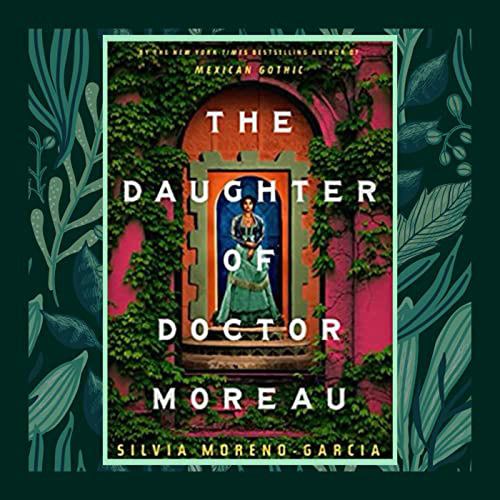

KEY WORKS CONSULTED for the “Secret History” and “Latinxfuturism” pages
Anzaldúa, Gloria. Borderlands/La Frontera (1987).
Bell, Andrea L. and Yolanda Molina-Gavilán, editors and translators. Cosmos Latinos: An Anthology of Science Fiction from Latin America and Spain (2003).
González, Christopher. “Latino Sci-Fi: Cognition and Narrative Design in Alex Rivera’s Sleep Dealer.” Latinos and Narrative Media: Participation and Portrayal, Fredrick Luis Aldama, ed. (2013).
Goodwin, Matthew David. “Foreward.” Latinx Rising (2017).
---, “U.S. Latino Speculative Fiction,” subheading of “Speculative Fiction by Writers of Color,” Wikipedia.
Goodwin, Matthew David Goodwin, and Ilan Stavans, “Latino Science Fiction,” Oxford Bibliographies (2016).
Haywood Ferreira, Rachel. The Emergence of Latin American Science Fiction (2011).
Hernández, Robb, et al. Mundo Alternos: Art and Science Fiction in the Americas (2017).
Merla-Watson, Cathryn Josefina. “The Altermundos of Latin@futurism” (Alluvium, Vol 6, No. 1, 2017).
Merla-Watson, Cathryn Josefina, and B.V. Olguín, editors. Altermundos: Latin@ Speculative Literature, Film, and Popular Culture (2017).


